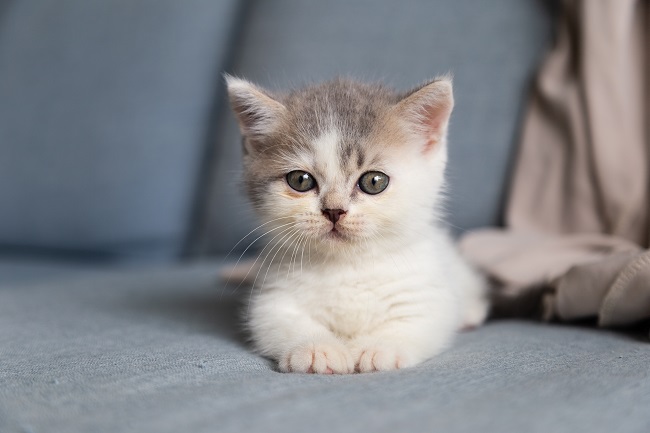
Cats have a relatively short gestation period, which means they can get pregnant more frequently than many animals and have kittens. This increased frequency means that the kittens don’t get a chance to fully develop all their senses before coming into the world. Eyesight and hearing – two of the most complicated – take time to properly mature. So, the kittens are born deaf, with the ear canal closed and not fully developed. Their ears continue to develop after birth; therefore, the ears are sort of folded to protect the internal mechanism until development is complete. After birth, it takes about 14 days for the ear canal to open. Until then, the kittens rely on signals they can feel, like the vibrations of their mother’s purring.
Why Cats Spend So Much Time Grooming
The typical cat devotes about a third of his waking day to grooming himself. Considering how many hours he devotes to sleep, this may not sound like much, but it translates to about three hours’ worth of self-pampering a day. There are several reasons why he grooms himself so fastidiously. Cats clean themselves with their saliva, which is thought to contain a detergent-like deodorizing substance that keeps his coat soft, glossy, and clean. But grooming also has other important functions: it removes dead hair and skin, tones up the muscles and stimulates blood circulation. This is also why mother cats clean their newborns so frequently.
How Cats Use Their Whiskers
How cats’ whiskers work isn’t fully understood, but there is no doubt that they are one of the feline’s most sensitive features. By bending his whiskers like antennae, a cat can magnify the smallest air disturbances. With these feelers, he can safely maneuver through underbrush and around obstacles and avoid bumping into things. A cat’s whiskers, called vibrissae, grow at the side of his mouth in four rows and above his eyes (cats don’t have eyebrows). There are approximately 30 of them, each attached to a nerve in the skin. They are so sensitive, that the cat relies on them to aid his movement in the dark. He can identify things he can’t see. Studies of blindfolded cats, for example, reveal that they can place their front paws on a tabletop when only their whiskers had touched its edge. The slightest touch on a whisker also causes a reflex closing of the eyes. This is vital protection for the feline hunter whose eyes are frequently fixed on prey. It also ensures that a twig or grass springing back will not cause injury. Whiskers are so important to the cat that removal of them can harm the cat. Some scientists theorize that the cat bends some or all his whiskers downward to help guide him when jumping or leaping over uneven ground. A cat with poor eyesight, or totally blind, will use his whiskers like a blind person uses a cane. The cat will walk with his head moving from side to side, using his whiskers to guide him.
How a Cat Can Crawl Through Small Openings Smaller Than Their Body
This ability is due to the absence of a collarbone. A cat has a chest cavity that is very small for his size; the lack of the collarbone and small chest size makes him practically collapsible. With the help of his whiskers, a cat will carefully figure out the height or width of an opening before attempting entrance.
Did You Know
The pattern on the nose pad of every cat is unique, just like human fingerprints.
Nearly all calico cats are female.
A quivering tail when your cat is nearby is considered the ultimate expression of love, but when the tail starts thrashing it means, “Back-off.”
The brain of a cat is more like the human brain than that of the dog. Cats and humans even have a region of their brain that is specifically designed to deal with emotion.
Related Articles & Free Email Newsletter Sign Up
Should You Give a Cat a Bath and More


Comment here